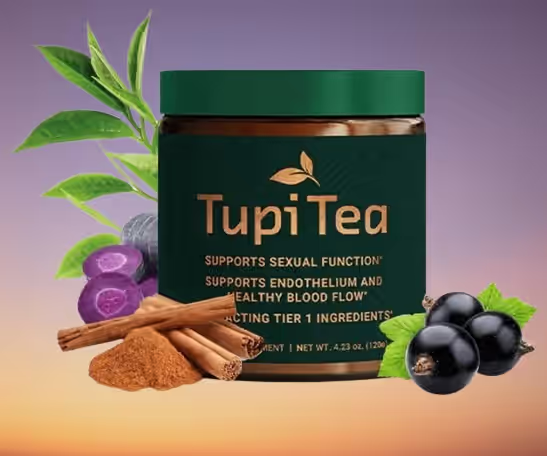Table of Contents
When comparing oolong tea vs green tea benefits, many tea enthusiasts might be surprised to learn that oolong actually has a higher count of antioxidants than its green counterpart. Despite accounting for only 2 percent of global tea consumption, oolong tea packs some impressive health credentials. In fact, research shows that nutrients in oolong tea have stronger antioxidant and antimutagenic effects than green or black varieties.
Whether you’re trying to lose weight or improve your overall health, both teas offer compelling advantages. Oolong tea may decrease body fat and boost metabolism, potentially reducing obesity risk, while green tea has been found to reduce cognitive impairment chances by 64% in older adults. Additionally, those who drink oolong tea daily might see a decreased type 2 diabetes risk by 30%. The difference lies partly in the processing—oolong’s oxidation levels range from 8 percent to 85 percent, significantly altering its flavor profile compared to green tea.
In this comprehensive guide, we’ll examine the unique properties of both teas, their caffeine content (with oolong typically containing more caffeine than most green teas), and how each might benefit your health differently. By the time you finish reading, you’ll have a clear understanding of which brew might better suit your wellness goals.
Processing and Origin Differences
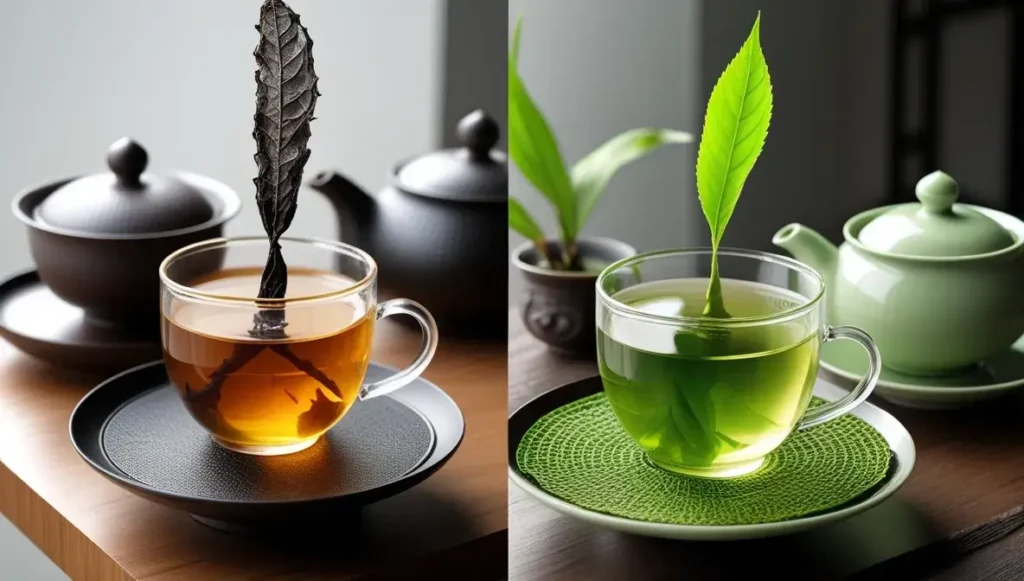
The fundamental differences between oolong and green tea begin at the processing stage, which ultimately shapes their unique profiles and health benefits.
Oxidation Levels: 8–85% in Oolong vs 0% in Green Tea
The primary distinction between these two popular teas lies in their oxidation levels. Oolong tea undergoes partial oxidation, ranging from 8% to 85% depending on the variety and production style. During this process, enzymes in the tea leaves convert catechins into theaflavins and thearubigins, changing both flavor and color. Conversely, green tea processing halts oxidation immediately after harvesting, resulting in 0% oxidation. This crucial difference explains why oolong offers a broader spectrum of flavors and falls between green and black tea on the oxidation spectrum.
Geographic Origins: Taiwan and Fujian vs China and Japan
Although both teas originated in China, they’ve developed distinct regional identities throughout history. Oolong tea production is concentrated primarily in Taiwan and China’s Fujian province. The Wuyi Mountains and Anxi County in Fujian represent major historical centers of Chinese oolong production. Tea cultivation in Taiwan began in the 18th century and has expanded rapidly since the 1970s. Meanwhile, green tea remains predominantly Chinese, with China still producing approximately 80% of the world’s supply. Japan has also developed its own distinctive green tea culture with unique processing methods.
Processing Methods: Sun-drying vs Steaming and Roasting
The processing techniques for these teas vary significantly across regions. For oolong, production involves withering leaves under strong sun, followed by rolling, shaping, and firing with meticulous attention to timing and temperature. The manufacturing process includes repeated stages to achieve precise browning of leaves. Green tea processing, however, focuses on preserving freshness through quick heat application—either through pan-frying (Chinese method) or steaming (Japanese method). These different techniques directly influence each tea’s characteristic flavor profile, with Chinese green teas often having a nuttier taste from pan-firing versus the more vegetal, umami-rich profile of steamed Japanese varieties.
👉 Discover the Best Premium Oolong Tea You Deserve 👈
Flavor, Caffeine, and Nutritional Profile
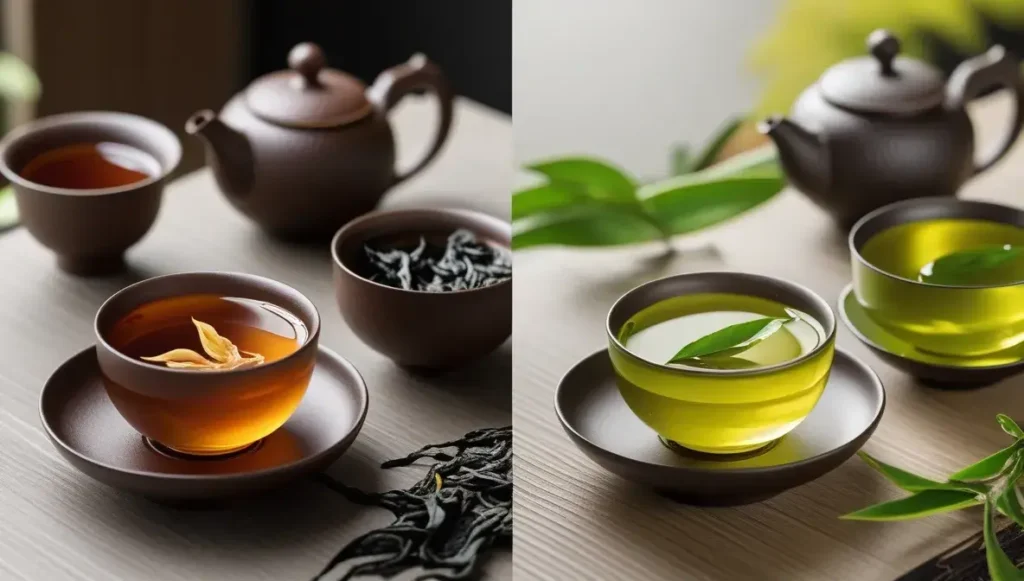
Beyond their processing methods, oolong and green teas showcase striking differences in taste, caffeine levels, and nutritional composition that directly influence their respective health benefits.
Flavor Notes: Fruity/Nutty vs Grassy/Vegetal
Oolong tea offers remarkable flavor diversity, ranging from floral and fruity to roasted and nutty, depending on oxidation levels. This tea provides a smooth, intense experience without the astringency found in other varieties. Many casual tea drinkers prefer oolong for its complex, approachable taste profile and creamy texture.
In contrast, green tea presents predominantly vegetal and grassy notes. It often carries a characteristic bitter undertone that gives it a distinctive sharpness. Chinese green teas frequently offer subtle nutty elements, whereas Japanese varieties lean toward marine or seaweed-like qualities.
Caffeine Content: 38mg vs 29mg per 8oz Cup
A standard 8-ounce cup of oolong tea contains approximately 38mg of caffeine, notably higher than green tea’s 29mg. This places oolong in the middle of the caffeine spectrum among true teas—less stimulating than black tea (42-79mg) but more energizing than green varieties.
Both teas provide substantially less caffeine than coffee, which typically contains 72-130mg per cup. Furthermore, both contain L-theanine, an amino acid that promotes calm alertness without jitters.
Nutritional Facts: Polyphenols, Catechins, and Fluoride
Green tea contains higher concentrations of catechins, particularly EGCG (epigallocatechin gallate), than oolong tea. These potent antioxidants contribute to green tea’s reputation for fighting free radicals and supporting heart health.
Oolong tea offers a balanced mix of catechins, theaflavins, and thearubigins due to its partial oxidation. Both teas contain beneficial minerals like potassium, magnesium, and calcium.
Interestingly, the fluoride content differs between varieties. Green tea contains 0.3-0.4mg per cup, whereas oolong provides 0.1-0.2mg, both within levels recommended for dental health.
Health Benefits of Oolong Tea vs Green Tea
Both oolong and green teas offer substantial health advantages, though each excels in different areas based on their unique compositions.
Weight Loss: Fat Oxidation and Metabolism Boost
Research shows oolong tea increases energy expenditure by 2.9% and fat oxidation by 12% compared to water. For some individuals, this translates to burning approximately 67-79 additional calories daily. One study of overweight individuals consuming oolong tea daily for six weeks found that 64-70% lost more than one kilogram without dietary changes. Green tea similarly supports weight management primarily through its catechin content.
Heart Health: LDL Reduction and Triglyceride Breakdown
Oolong tea contains polyphenols that activate enzymes breaking down triglycerides in your blood. Studies demonstrate that oolong tea can lower LDL cholesterol levels, especially in people with dyslipidemia. Similarly, green tea reduces total cholesterol, LDL, and triglyceride levels according to a meta-analysis published in the American Journal of Clinical Nutrition.
Diabetes Management: Blood Sugar and Insulin Sensitivity
Regular tea consumption is associated with improved blood sugar control and approximately 17% reduced risk of type 2 diabetes over a 10-year period. Research specifically examining oolong tea found that diabetic patients drinking 1,500 milliliters daily experienced 29% decreases in blood glucose levels.
Cognitive Support: L-theanine and Brain Function
L-theanine in both teas enhances cognitive performance by improving attention and working memory. Accordingly, studies show that regular tea consumption may decrease cognitive decline risk, with one finding that tea drinkers had “significantly higher verbal fluency scores”.
Dental and Bone Health: Fluoride and Mineral Density
Tea’s natural fluoride content provides protection against cavities. Equally important, research shows tea polyphenols enhance bone formation while inhibiting bone resorption, potentially explaining why tea drinkers demonstrate approximately 2% higher bone mineral density.
👉 Try the #1 Green Tea Pick of the Year 👈
Suitability and Side Effects
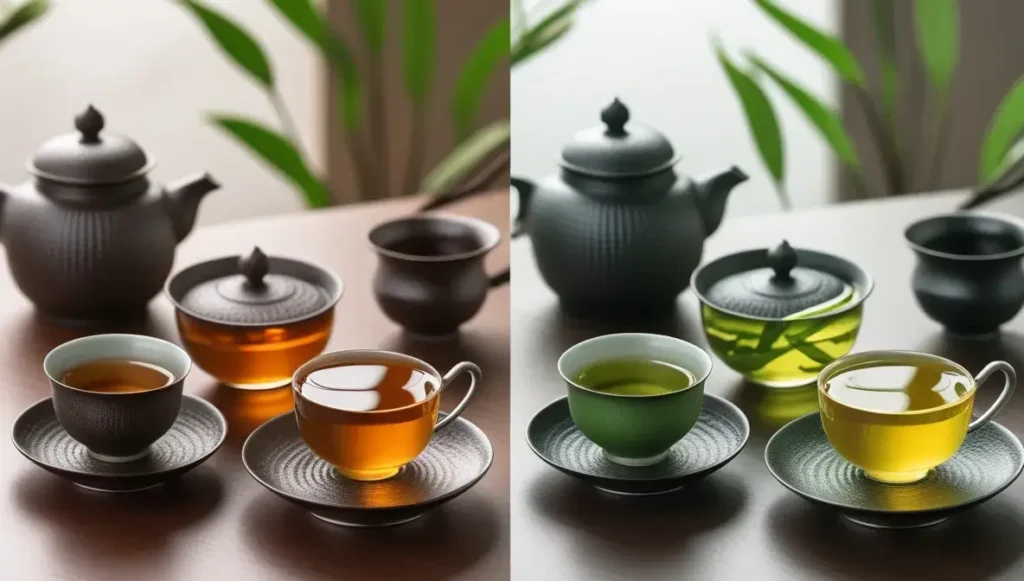
Understanding the suitability of each tea type requires consideration of individual health needs, timing, and consumption patterns.
Caffeine Sensitivity: Who Should Avoid Which Tea
Oolong tea contains 30-50mg of caffeine per cup, moderately higher than green tea’s 25-35mg. Consequently, those with caffeine sensitivity might experience more side effects with oolong tea. Individuals with anxiety disorders, heart problems, diabetes, seizures, glaucoma, high blood pressure, or irritable bowel syndrome should approach both teas with caution. Pregnant women should generally limit caffeine intake, with oolong’s higher content requiring more careful monitoring.
Best Time to Drink: Morning vs Evening Use
Oolong tea works best as a morning or afternoon beverage, primarily because its caffeine content can disrupt sleep when consumed within 6 hours of bedtime. On the contrary, lighter green teas may be more suitable for evening consumption. For those seeking relaxation benefits without sleep disruption, green tea generally offers a gentler option.
Daily Intake Recommendations: 2–5 Cups per Day
Most experts suggest 2-3 cups of oolong tea daily for maximum benefits without side effects. Indeed, exceeding 5 cups daily might trigger caffeine-related issues including anxiety, insomnia, and irregular heartbeat. The FDA and EFSA consider 400mg of caffeine (approximately 6-10 cups) safe for most adults, though pregnant women should limit intake to 200mg (3-5 cups) daily.
Comparison Table
| Characteristic | Oolong Tea | Green Tea |
|---|---|---|
| Processing | ||
| Oxidation Level | 8-85% | 0% |
| Primary Production Regions | Taiwan and Fujian Province (China) | China (80% of world supply) and Japan |
| Processing Method | Sun-drying, rolling, shaping, and firing | Pan-frying (Chinese) or steaming (Japanese) |
| Flavor & Composition | ||
| Taste Profile | Floral, fruity to roasted and nutty | Grassy, vegetal, bitter undertone |
| Caffeine Content (per 8oz) | 38mg | 29mg |
| Fluoride Content (per cup) | 0.1-0.2mg | 0.3-0.4mg |
| Health Benefits | ||
| Weight Management | Increases energy expenditure by 2.9% and fat oxidation by 12% | Supports weight management through catechin content |
| Diabetes Impact | Can decrease blood glucose levels by 29% | Reduces type 2 diabetes risk |
| Cognitive Effects | Enhances cognitive performance | Reduces cognitive impairment chances by 64% in older adults |
| Consumption Guidelines | ||
| Recommended Daily Intake | 2-3 cups | 2-5 cups |
| Best Time to Consume | Morning or afternoon | More suitable for evening consumption |
| Caffeine Sensitivity | Higher risk of side effects | Lower risk of side effects |
👉 Taste Top-Rated Oolong Tea Loved by Tea Experts 👈
Conclusion: Your Guide to Oolong Tea vs Green Tea Benefits

Both oolong and green tea offer remarkable health benefits, though they diverge significantly in their processing, flavor profiles, and optimal use cases. Oolong tea stands out with its partial oxidation (8-85%) creating a spectrum of flavors from fruity to nutty, whereas green tea remains completely unoxidized, yielding its characteristic grassy notes.
Weight management enthusiasts might prefer oolong tea due to its ability to increase energy expenditure by 2.9% and fat oxidation by 12% compared to water. Additionally, oolong contains more caffeine (38mg per cup) than green tea (29mg), making it a better morning energizer for those seeking a moderate caffeine boost without coffee’s intensity.
Green tea certainly holds its own advantages. This popular brew contains higher concentrations of catechins, particularly EGCG, which fight free radicals effectively. Evidence suggests green tea consumption may reduce cognitive impairment chances by 64% in older adults, making it an excellent choice for brain health.
The decision between these two remarkable teas ultimately depends on your specific health goals and lifestyle needs. Those prioritizing metabolism support and a bolder flavor profile might gravitate toward oolong. Conversely, individuals with caffeine sensitivity or those seeking evening relaxation would benefit more from green tea’s gentler profile.
Regardless of which tea you choose, moderation remains key. Most experts recommend 2-3 cups of oolong daily, while green tea consumption can safely reach 2-5 cups per day. Therefore, as you contemplate your next cup, consider not just the taste but also how each tea’s unique properties align with your personal wellness journey. After all, the best tea choice is one that brings you both pleasure and health benefits together in perfect harmony.
Key Takeaways
Both oolong and green tea offer impressive health benefits, but their differences in processing, caffeine content, and specific advantages make each suitable for different wellness goals and lifestyles.
• Oolong tea boosts metabolism more effectively, increasing energy expenditure by 2.9% and fat oxidation by 12%, making it superior for weight management goals.
• Green tea contains higher antioxidant levels with more catechins (especially EGCG) and may reduce cognitive impairment risk by 64% in older adults.
• Caffeine content differs significantly: oolong contains 38mg per cup versus green tea’s 29mg, affecting timing and suitability for sensitive individuals.
• Processing creates distinct profiles: oolong’s 8-85% oxidation produces fruity/nutty flavors, while green tea’s 0% oxidation maintains grassy/vegetal notes.
• Optimal consumption varies by tea type: limit oolong to 2-3 cups daily (best morning/afternoon), while green tea allows 2-5 cups and suits evening consumption better.
The choice between these teas should align with your specific health priorities—oolong for metabolism and energy, green tea for antioxidants and cognitive support. Both provide substantial benefits when consumed mindfully within recommended daily limits.
👉 Sip the Ultimate Luxury of Fresh Green Tea 👈
FAQs
Q1. Which tea is better for weight loss, oolong or green tea? Oolong tea may have a slight edge for weight loss, as it increases energy expenditure by 2.9% and fat oxidation by 12%. However, both teas support weight management, with green tea also offering benefits through its catechin content.
Q2. How do the caffeine levels in oolong and green tea compare? Oolong tea typically contains more caffeine, with about 38mg per 8oz cup, while green tea has around 29mg. This makes oolong a better choice for a morning energy boost, while green tea might be more suitable for evening consumption.
Q3. What are the main differences in taste between oolong and green tea? Oolong tea offers a range of flavors from fruity and floral to roasted and nutty, depending on its oxidation level. Green tea, on the other hand, has a more consistent grassy or vegetal taste with a characteristic bitter undertone.
Q4. How do oolong and green tea compare in terms of health benefits? Both teas offer significant health benefits. Oolong tea is particularly effective for metabolism and weight management, while green tea is known for its high antioxidant content and potential cognitive benefits, especially in older adults.
Q5. How many cups of oolong or green tea should I drink daily? For oolong tea, experts recommend 2-3 cups daily. Green tea consumption can safely reach 2-5 cups per day. It’s important to consider individual caffeine sensitivity and to avoid excessive consumption, which could lead to side effects.
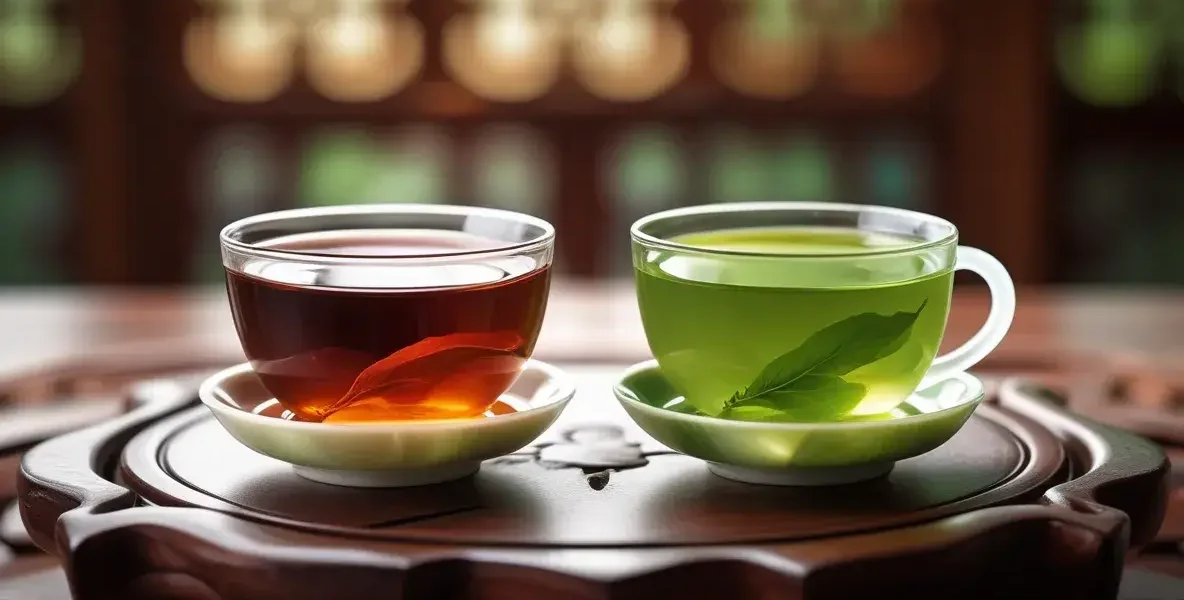

![Jasmine Tea vs Green Tea Benefits: Which Gives Better Health Results? [2025] jasmine tea vs green tea benefits](https://www.goteaworld.com/wp-content/uploads/2025/09/jasmine-tea-vs-green-tea-benefits-150x150.webp)

![Pu Erh Tea vs Green Tea: Which is Better for Daily Health? [2025] pu erh tea vs green tea](https://www.goteaworld.com/wp-content/uploads/2025/10/pu-erh-tea-vs-green-tea-150x150.webp)








